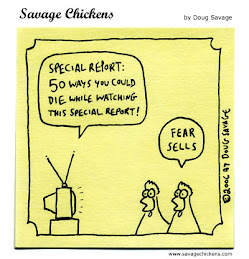News stories tend to hype tragedies to create entertaining drama for audiences. One method of emphasizing tragic events to instill fear in viewers is what author Benjamin Radford refers to as “The Ruined Fairytale Myth” (Radford, 79). He describes the myth as a “news story that begins by setting up an idyllic family or person’s life and proceeds to describe the horrors that followed” (Radford, 79). To successfully make the viewer sympathize for the victim, the journalist paints a particularly rosy and romanticized picture of life before the crime, leaving the viewer with a story that is “sensational, dramatic, and (with) no social value whatsoever” (Altheide, 190). Seeing the victim as an innocent, moral, upstanding citizen leads the viewer to fear that the same tragedy might befall him too.
Another way the news spreads fear in viewers is by focusing on the victims who struggle the most with coping. After the September 11th attacks, many Americans felt anxious and grief-stricken. In the coverage of the aftermath in the months that followed, the majority of those interviewed were still struggling to cope with the disaster. This grief-focused coverage only showed Americans the emotional responses of a minority. In a CBS News poll done in January 2002, almost 90% of Americans reported their lives were back to normal or were never affected by the attacks (Radford, 81). Nevertheless, the news pursued depressed and anxious Americans for their stories, portraying a false image of post-trauma America. By prolonging the tragedy and emphasizing those who suffer the most, the news conditions Americans to dwell on pain and it keeps the fear of disaster alive.







No comments:
Post a Comment